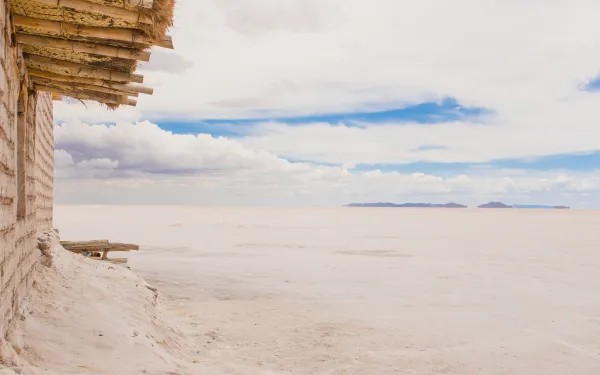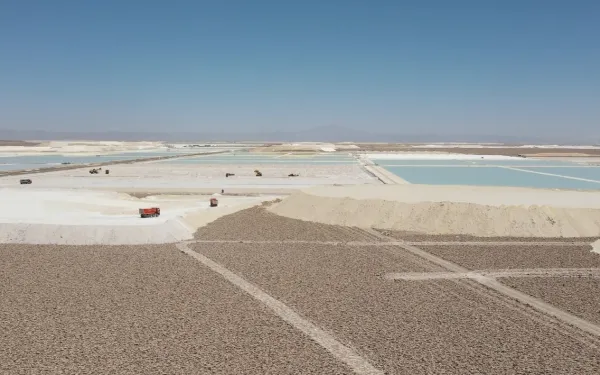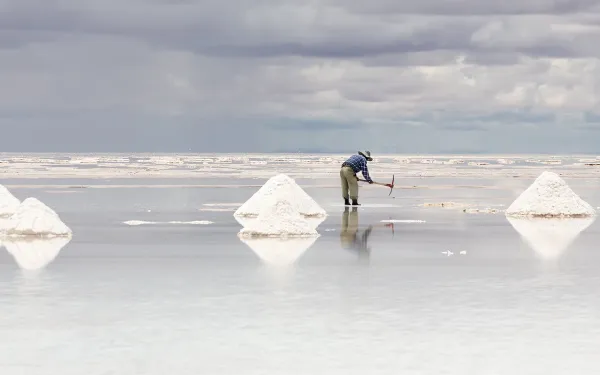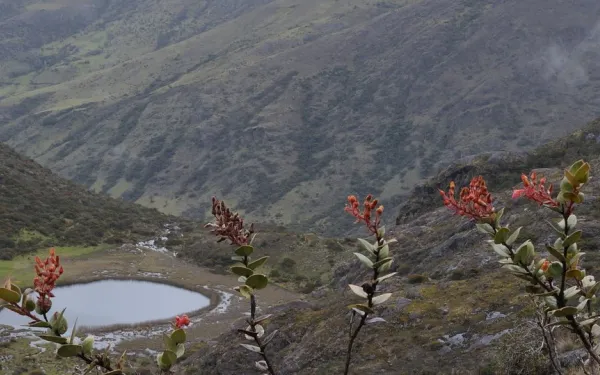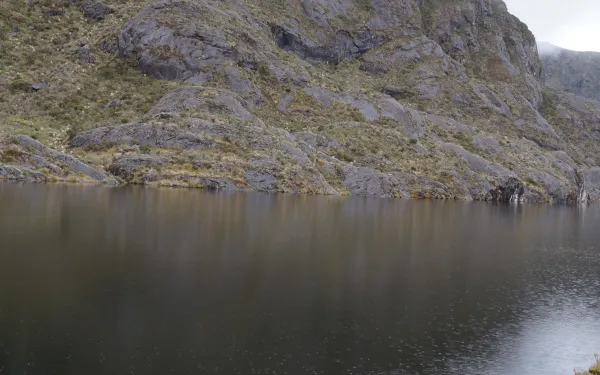
Declaration of a Temporary Reserve Area in the Santurbán Páramo is a victory for the defense of water in Latin America
Civil society organizations celebrate the measure taken by the Colombian Ministry of the Environment, which involves a two year suspension of Canadian company Aris Mining's gold mining project in the páramo.Bogotá, Colombia. The Interamerican Association for Environmental Defense (AIDA), the Institute for Policy Studies (IPS) - Mining and Trade Project, MiningWatch Canada, the Center for International Environmental Law (CIEL) and Common Frontiers Canada celebrate the Colombian Ministry of Environment and Sustainable Development’s (MADS) resolution that declares the western side of the Santurbán massif a temporary renewable natural resource reserve area. This major step strengthens the protection of one of the most emblematic high-altitude Andean wetlands, known as páramo, and its related ecosystems, which are fundamental for climate change adaptation and water security in the region for an estimated 2 million people.Resolution 0221, issued on March 3, 2025 by the Ministry of Environment and Sustainable Development (MADS), delimits and protects an area of 75,344.65 hectares, ensuring a two year provisional suspension of the Soto Norte gold mining project owned by Canadian company Aris Mining and its Colombian subsidiary, Sociedad Minera de Santander S.A.S. (Minesa), which puts Santurbán at risk. Citing the precautionary principle, the resolution prohibits the granting of “new mining concessions, special exploration and exploitation contracts, (...) as well as new environmental permits or licenses for the exploration or exploitation of minerals” in the area until the necessary technical studies are carried out toward its definitive protection. This resolution does not affect agricultural, livestock or tourism activity in the area.However, we are concerned that the resolution leaves in force the concession contract with Calimineros, which has had a subcontract with Minesa to formalize [its small-scale mining activities] since 2020, and from which Minesa promises to buy and process mineralized material. We encourage the competent authorities to suspend evaluation of its environmental license application and extension of the formalization subcontract, due to potential environmental impacts on Santurbán and because it is effectively part of the Soto Norte project.The páramo and related ecosystems are highly sensitive, recognized for their role in water regulation, carbon capture, and the conservation of endemic biodiversity. The removal of vegetation cover and the fragmentation of ecosystems that mining in Santurbán would generate could affect the ecological balance, biodiversity, and the provision of ecosystem services essential for life; acidify and reduce the amount of available fresh-water; and break the ecological interconnectivity with other biomes and ecosystems, destroying their capacity to sequester carbon and causing irreparable damage.For these reasons, we appreciate that the resolution seeks to prevent mining development in this highly sensitive and environmentally important area, preventing degradation of the watersheds that arise from Santurbán and preserving the water cycle.Sebastián Abad-Jara, an attorney for AIDA, pointed out that "by protecting Santurbán, Colombia ratifies its commitment to meet global environmental goals in terms of biodiversity, climate and wetlands, and sets a high bar for the governments of other countries where these ecosystems are similarly threatened by mining activity, such as Peru and Ecuador.""We celebrate this declaration as an important first step toward the consolidation of the western side of the Santurbán massif as a permanent reserve area, definitively protecting this important water source, vital for all who depend on it," said Jen Moore, associate fellow at IPS - Mining and Trade Project.Viviana Herrera, Latin America Program Coordinator for MiningWatch Canada, added that "this resolution is the result of the Committee for the Defence of Water and Páramo of Santurbán’s hard work, which has faced harassment and intimidation for its work in defense of the páramo, as well as disinformation campaigns about the supposed harmful effects of the resolution on agricultural activity."AIDA, IPS-Mining and Trade Project, MiningWatch Canada, CIEL and Common Frontiers Canada support the adoption of this protection measure for Santurbán. We also encourage the national and local government to carry out the necessary technical studies for its definitive protection, and to take preventive measures to avoid the cumulative environmental impacts of mining in the area given other projects that already have mining licenses. Furthermore, we reiterate the urgency of adopting measures to protect environment defenders in Colombia who stand up for the páramo.The Santurbán experience provides valuable lessons and should serve as an example to promote legislation for environmental protection in Latin America that focuses on the human right to water and the balance and integrity of fragile ecosystems, such as the páramo and other high-altitude ecosystems.#OurGoldIsWater Press contactsVictor Quintanilla (Mexico), AIDA, [email protected], +5215570522107Jennifer Moore, IPS, [email protected], +12027049011 (prensa IPS)Viviana Herrera, Mining Watch Canada, [email protected], +14389931264Alexandra Colón-Amil, CIEL, [email protected], +12024550253
Read more



